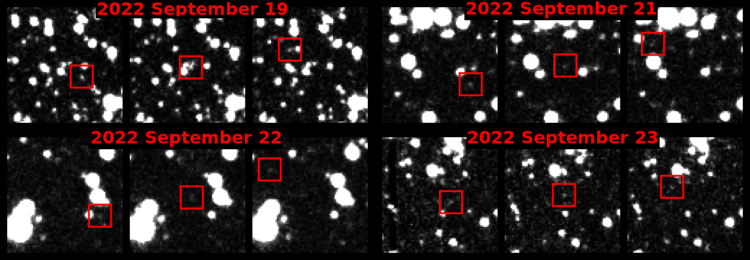A special algorithm designed to spot dangerous near-Earth asteroids appears to be so good it has spotted its very first one during an initial test.
The Vera C. Rubin Telescope is expected to come online in August 2024. Among the many incredible observations and surveys that it will conduct will be a 10-year survey of the night sky in the Southern Hemisphere. The algorithm has been developed to hunt for “potentially hazardous” asteroids within this survey and while being tested on the ATLAS survey in Hawai`i, the software, called HelioLinc3D, found asteroid 2022 SF289, a 200-meter (600-foot) space rock that moves between the orbits of Earth and Jupiter.
“By demonstrating the real-world effectiveness of the software that Rubin will use to look for thousands of yet-unknown potentially hazardous asteroids, the discovery of 2022 SF289 makes us all safer,” Ari Heinze, principal developer of HelioLinc3D and a researcher at the University of Washington, said in a statement.
Potentially hazardous asteroids (PAH) yet to be discovered are likely in the thousands. Currently, detections are performed by telescopes observing the same area in the sky at least four times every night looking to see if any spots of light are moving in a clearly straight line in the images. This method has so far detected 2,300 PAHs but it doesn’t work all the time and for every telescope.
The Rubin Observatory will observe every area in the southern night sky much faster, twice per night with its massive 3,200-megapixel camera and 8.4-meter mirror. But astronomers still needed a new type of algorithm to reliably spot the space rocks. While waiting for Ruben to get up and running, they tested out HelioLinc3D on ATLAS data to see if they could find one. ATLAS had not detected asteroid 2022 SF289 as it was too faint and difficult to see, but it had imaged the space rock three nights in a row last September, while it was 20 million kilometers (13 million miles) from Earth.
“Any survey will have difficulty discovering objects like 2022 SF289 that are near its sensitivity limit, but HelioLinc3D shows that it is possible to recover these faint objects as long as they are visible over several nights,” said Denneau. “This in effect gives us a ‘bigger, better’ telescope.”

The images showing the asteroid.
Image Credit: ATLAS/University of Hawaii Institute for Astronomy/NASA
2022 SF 289 was missed by many surveys as it was passing in front of the Milky Way’s disk in the sky. But thanks to the algorithm detection, it was then spotted across a variety of surveys. The space rock can get very close to the Earth, half as near as the Moon, but it’s not a risk to our planet in the foreseeable future.
The success of this algorithm bodes well for future detections and how the Rubin survey will help us hunt for more PAHs. Scientists expect there are still around 3,500 left to be found.
“This is just a small taste of what to expect with the Rubin Observatory in less than two years, when HelioLinc3D will be discovering an object like this every night,” said Rubin scientist Mario Jurić, leader of the team behind HelioLinc3D.
The most dangerous asteroid we know of remains asteroid Bennu, the first-ever samples of which are set to return to Earth this September.
Source Link: New Algorithm Hunting For Dangerous Asteroids Spots Its First One During Test